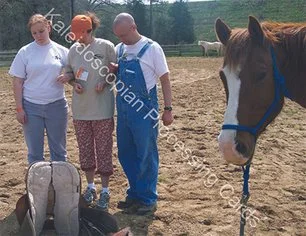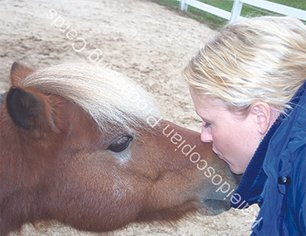SENSE OF PURPOSE
Women Leaders in the late 1990’s was a radical idea. Bringing together female professional leaders for monthly lunches to learn, connect, and network was not common. It replicated what many of our male peers took for granted and was considered by some men to be bold and threatening.
Angelica, the founder of Women Leaders, was a county Chamber of Commerce Vice- President. She knew the power that could be wielded through women deepening their trust in relationships. She and two of her sisters held very influential positions in our county governance. Those connections provided actionable responses to problems that in other circumstances might take longer to occur or possibly not develop.
Several members of WL encouraged me to connect with another member, Beth. Beth was a life coach, something also pretty new in the 90’s. I was told she shared my passion for helping people live into their best versions of themselves. Beth had also been informed by members that she would enjoy meeting me.
One lunch meeting we found each other – hugged, laughed, and a lifelong friendship was born. Sitting next to each other that day, in between bites of a seasoned chicken breast, wild rice, and green beans almondine, we brainstormed about providing an introduction to Equine-Assisted Learning. The women’s series, Seasons of Change was born. We originally planned to offer four evening sessions from 6-9 p.m.
Spring: The Season of New Life. What is the “something new in your life that you’d like to explore more deeply? Are you in a new role at home or work? Was there a recent change in your responsibilities as a wife, mother, sister, or friend? During our time together we will explore the birth or rebirth happening in your life and we will fertilize and prepare your soul to help you grow and blossom.
Summer: Brings Warmth. Chapters in our lives sometimes possess a summer quality – longer periods of natural light, where we wish we could press a “pause” button to hold onto the moment forever. During our time together, we identify the foundations of the “summer” qualities of our lives, mapping out ways to create more of what brings us the warmth and fun.
Autumn: Harvest the joys of Autumn. The rich colors of trees changing and garden’s bounty dance in oranges, yellows, and reds: feeding us now and into the gray winter months. Are you embracing the fruits of your efforts and sharing the bounty with others? During our time together we will identify our behaviors that serve us and our purpose. Through harvesting your brilliance, you support all you see to grow and nurture for yourself and those you love.
Winter: Welcome Hibernation. This program focuses on the power and necessity of hibernation, going within to strengthen your ability to reach out. You may experience a time in your life where “recharging” I what fulfills you. During our time together we will identify practices that help you find your center and offer rest for our often overworked and stressed out mind and body.
Because busy, professional women are busy being professional and mom’s/wives/daughters, etc.; ultimately, we held one session, Summer. The timing best worked for eight interested participants. Together, Beth, Stacie, and I crafted the agenda, planned meals, and prepared for a intro to both my work and Beth’s coaching facilitation.
Our group gathered at my farm and following the standard introductory activities, we moved to the activity of reflective roundpenning. We chose this activity to introduce our participants to pressure, asking, and intention. The focus was on creating movement of the horse to represent movement in your life in areas that you desire.
I, and the other participants gathered around the outside of the pen. Stacie went into the circle where Diva was patiently waiting. She demonstrated moving Diva around the inside edge of the pen by positioning her body toward her hind quarters. She focused her energy, faced her with her gently raised her arms, putting pressure on her as an ask to move forward. She walked off slowly, so Stacie increased the pressure by moving closer, asking her to pick up speed. She started to trot. Stacie waved her arms adding even more pressure, so Diva begrudgingly began to canter. After she moved into the canter, Stacie rewarded her behavior by stepping back and releasing the pressure.
After a short time of her cantering to the right, Stacie shifted her body, turning Diva now to circle to the left. Having done this countless times, Stacie demonstrated a beautiful dance, with Diva simply doing what she was asked, not showing any frustration. When Stacie completely took the pressure off, Diva turned toward her and walked into the center of the pen to meet her. She had “joined up” with her, recognizing her respectful leadership.
After the demonstration of roundpenning, Janet volunteered to be our first participant. We opened the gate and she entered. Diva, ears pointed forward in interest, waited in the center of the arena. Janet moved toward her, placing her hand below her nose to allow her to sniff it. She then tried to mimic what she witnessed what Stacie had so easily demonstrated.
Janet waived her arms and hands trying to get Miss D to the edge of the round pen. The mare stood firm, not responding to her frantic arm movements. Janet continued to flap her arms, adding whooshing sounds to the activity. Diva tilted her head quizzically, looked over at Stacie and I standing outside the roundpen, as if to say, “What in the world does this human want from me?” Stacie and I both quietly chuckled. Diva was famous for helping people learn exactly what they needed to, often surprising us and our clients.
Janet was clearly getting frustrated by Diva’s lack of interest; Janet tried backing up and running toward the horse trying to get her to move. After several charging attempt without success, our participant turned and looked at Stacie and I, shrugged as if to say she was giving up. Our rule was that you don’t help someone unless they verbally ask, even though we could tell by her demeanor that she was wanting for our help. Waiting patiently, or holding space, for a client to verbally make a request is a powerful facilitative approach; it supports helping people practice asking for what they want, instead of assuming. It was at this moment that Diva literally turned around and faced the corner, ignoring Janet completely!
Stace and I now stood as firmly as Diva had, mirroring that Janet was best served by making her intention clear. Janet sighed and then in a very emotional voice,
“What am I doing wrong? Why can’t I get her to move?”
I replied, “You’re not clear in your communication with her. Remember the part where Stacie pointed her energy at Diva’s hind quarter, then released the pressure when she got the desired result. You’re not aiming your energy in a way she understands. It might help if you grounded yourself, clearly identifying your intention, however that looks for you.”
Janet walked to the center of the roundpen and then took the power pose. Diva was enthralled, and turned back from the corner, facing Janet and curious what she was doing.
Janet stood quietly for a minute, still facing us and turned away from Diva. She closed her eyes. Took a deep breath. Then, she opened her eyes, turned towards Diva, raising her arms in an action-figure power pose, pointing her pelvis towards Diva’s rear quarter. D understood the request. She started as a gentle trot and then broke into a full gallop running around the pen! Janet continued her power pose, aiming her energy at Diva, standing in the middle, slowing turning.
After Diva traveled around the path three full times, Janet lowered her arms. This brought Diva to a stop. The mare turned to face Janet, took a deep breath, then walked toward her. Janet patted her muscled neck, thanking her for the experience. She whispered something softly to the horse that none of us could hear, while tears spilled down her cheeks. She wiped them away with a sleeve while exiting the roundpen. Our next participant, Dawn patted Janet’s shoulder as they passed each other going through the gate.
While Stacie and I debriefed what the experience with the rest of the group; Beth noticed that Janet was quietly sobbing in a corner. Beth approached her, putting her hand gently on her back. She leaned closer, then softly asked, what are you feeling? Janet sighed deeply the turned to face Beth. Both looked deeply into each other’s eyes, when Janet spoke from her heart telling Beth,
“I’d forgotten how powerful I am.”
Have you ever had a time where you forgot how powerful you are or you gave away your power?
What action did you take to reclaim your power?
Is there a situation now that you’d like to be more powerful in? What action will you take to make that happen, regardless of the consequences?







